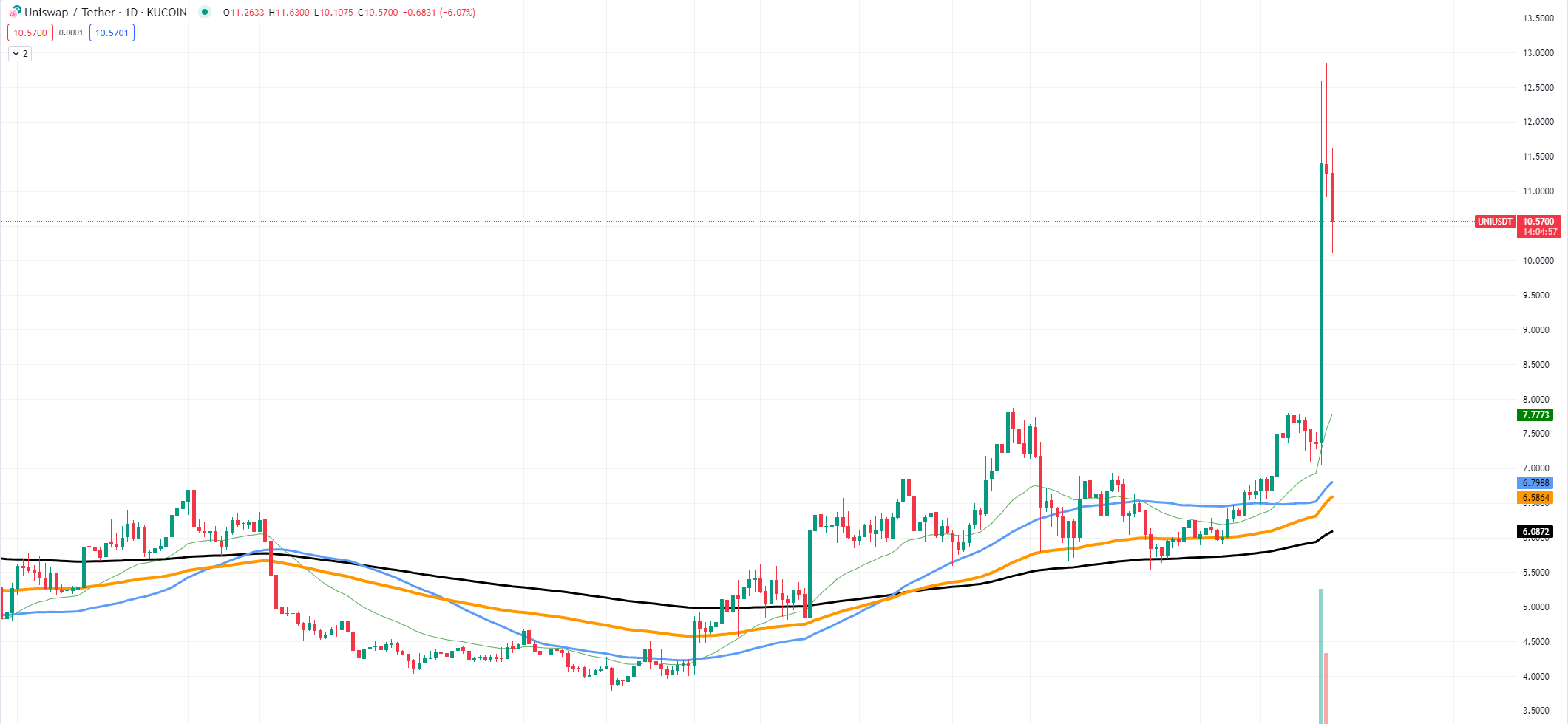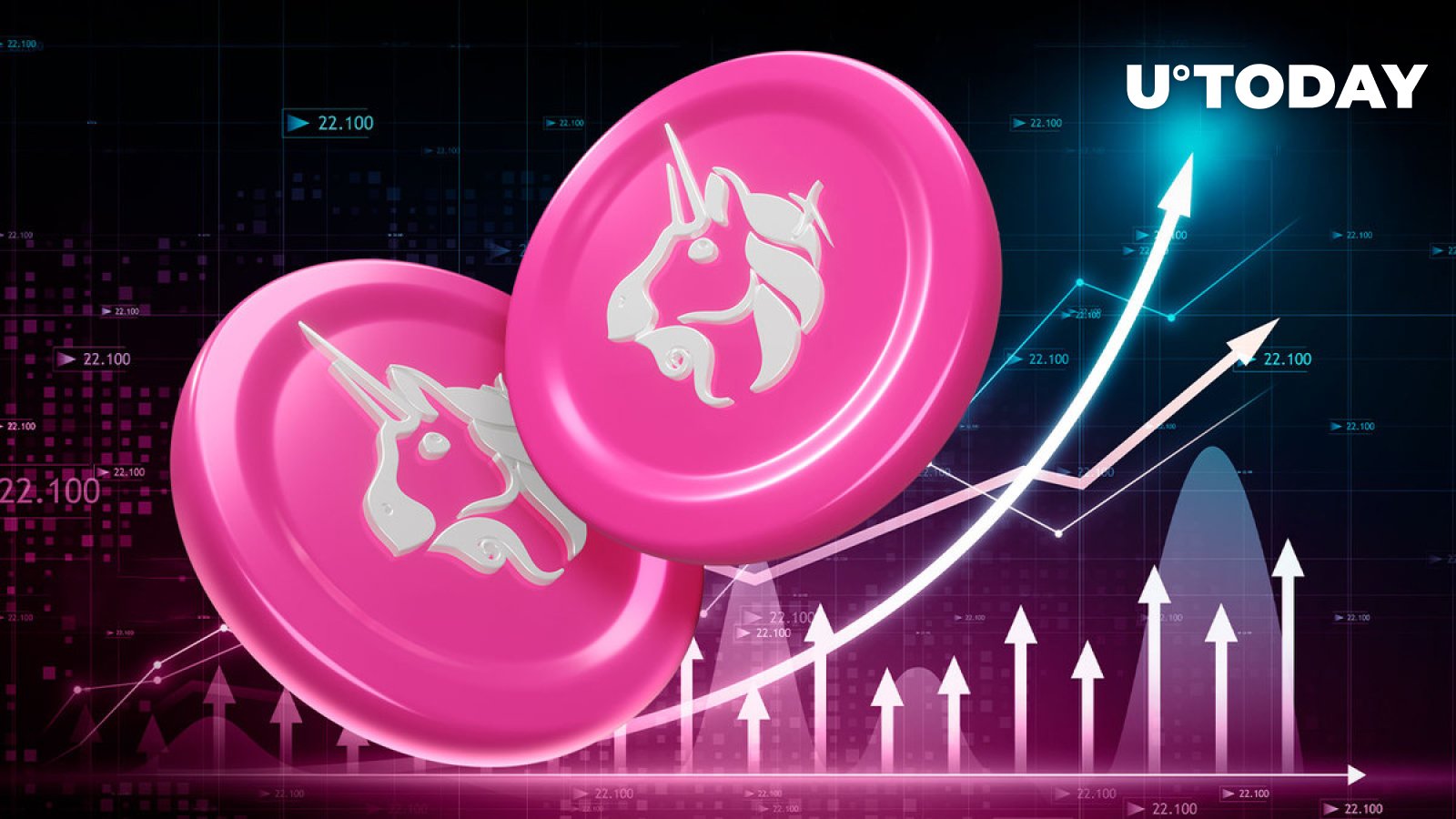Disclaimer: The opinions expressed by our writers are their own and do not represent the views of U.Today. The financial and market information provided on U.Today is intended for informational purposes only. U.Today is not liable for any financial losses incurred while trading cryptocurrencies. Conduct your own research by contacting financial experts before making any investment decisions. We believe that all content is accurate as of the date of publication, but certain offers mentioned may no longer be available.
Within a 24-hour period, UNI experienced a remarkable price surge, skyrocketing by 55% from $7.15 to an impressive peak of $12.77, marking a 79% increase. But there’s a justified question: What catalyzed such a significant surge in UNI’s value?
The phenomenal ascent in UNI’s price can be directly attributed to Uniswap’s latest governance proposal.

In this case, the venture capital firm a16z, which holds 64 million UNI tokens — valued at approximately $720 million, or 6.4% of UNI’s total supply — has a potentially decisive influence over the vote. With a quorum threshold of merely 4% of the UNI supply for a “yes” vote, the power wielded by a16z is substantial.
Further research reveals that a16z received this massive allocation of UNI from wallets designated for the Uniswap team, investors and advisors. This strategic distribution to 31 distinct wallets could significantly affect the outcome of governance votes, providing the ability to sway decisions.
Moreover, a surge of buying power was detected ahead of UNI’s price increase, suggesting that insider knowledge may have been at play. Certain individuals or entities may have acted on non-public information regarding the proposal’s impact on UNI’s value.
From a price performance perspective, Uniswap’s token is showing a common pump scheme where the price of an asset surges unnaturally with high volatility. As for now, a mild correction has already happened. We might also expect an aggravation of the current price action due to active profit taking among mid- and long-term investors.
